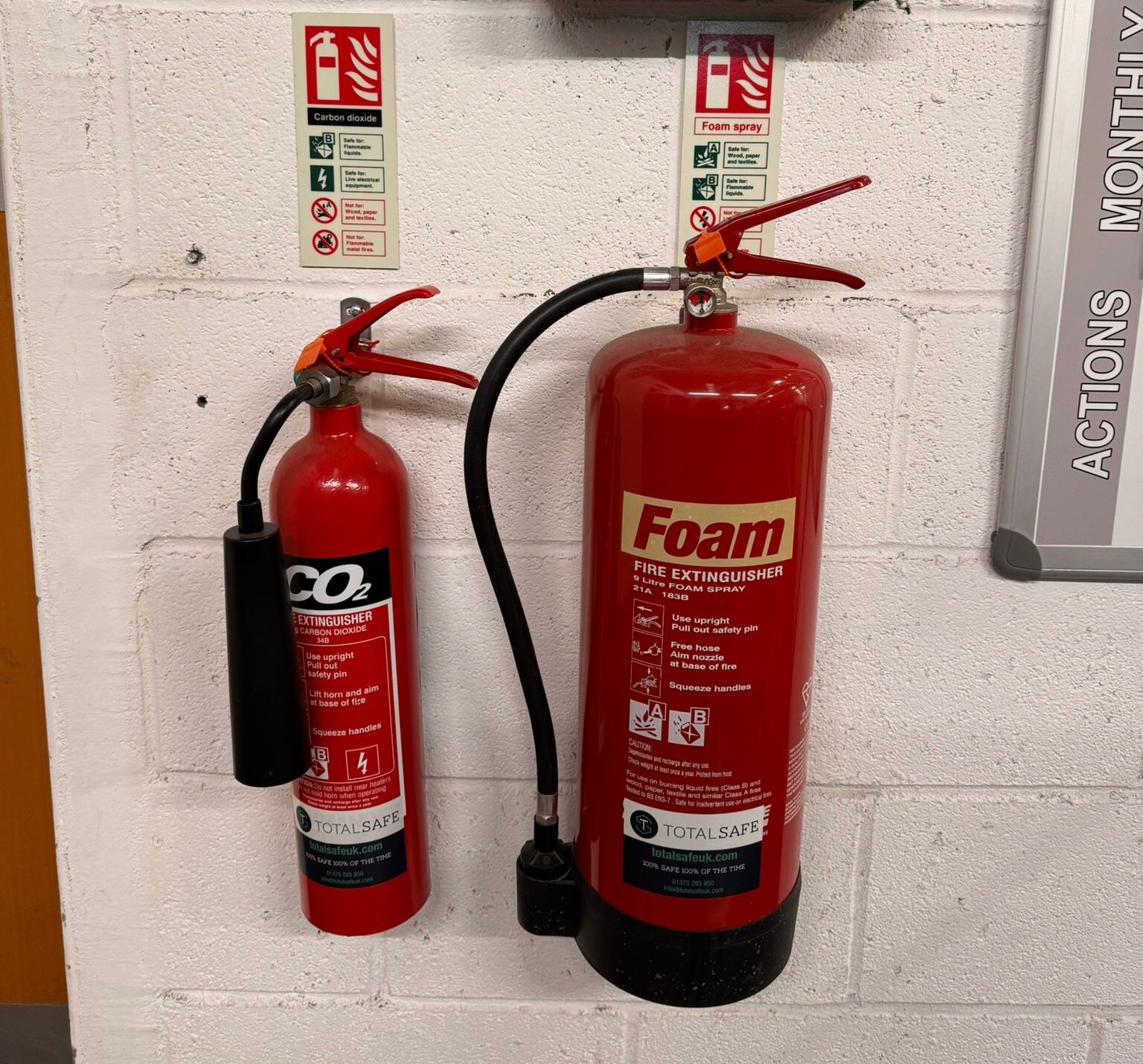Fire Extinguishers Maintenance: A Guide to Compliance
Fire extinguishers are essential for workplace and residential safety. They are a critical line of defence, often the first tool used to combat small fires before they escalate. However, the effectiveness of a fire extinguisher is only guaranteed when it is in proper working condition. Regular servicing and fire extinguisher maintenance is key to ensuring that fire extinguishers remain reliable and functional when needed most. This article covers the importance of fire extinguishers maintenance, how it works, and what to expect from a qualified inspection.
Why Fire Extinguisher Maintenance is Crucial
- Safety Assurance: Fire extinguishers that are not maintained may malfunction, making them unreliable in emergencies. Regular servicing provides peace of mind that the extinguishers will work when needed.
- Compliance with Regulations: Many local and national fire safety laws require regular inspections and maintenance of fire extinguishers. This is especially true for commercial properties where fire extinguisher servicing helps avoid fines and legal issues.
- Extended Equipment Life: Regular servicing identifies and fixes issues early on, preventing equipment from deteriorating quickly, which in turn prolongs the life of the extinguisher and saves on replacement costs.
- Environmental Impact: A well-maintained fire extinguisher uses its contents efficiently, which reduces the potential environmental harm of accidental discharge or leakage.
How Often Should Fire Extinguishers Be Serviced?
Fire extinguishers generally need to be serviced and inspected at regular intervals:
- Monthly Visual Inspections: A quick, visual inspection by a trained individual or maintenance staff is usually required to ensure the extinguisher is visible, accessible, and appears to be in good condition. This inspection should confirm that there are no physical damages or blockages to the nozzle, the pressure gauge is in the green zone, and the safety seal is intact.
- Annual Servicing: At least once a year, all fire extinguishers must undergo a more comprehensive inspection by a certified technician. This servicing ensures that the extinguisher meets the operational requirements for safety and functionality.
- Extended Servicing Intervals: Some types of fire extinguishers, such as CO₂ extinguishers, require extended servicing, such as hydrostatic testing, every five to six years to check for internal corrosion and pressure integrity.
What Fire Extinguisher Servicing Entails
A certified fire safety technician will typically follow these steps during an inspection and servicing:
- Visual Inspection: The technician examines the exterior for signs of wear, corrosion, leaks, or damage. They’ll also check the safety seals, pull pin, and the accessibility of the extinguisher.
- Pressure Check: The pressure gauge is checked to ensure that the extinguisher is adequately pressurised. If the pressure is too high or low, adjustments or replacements are made.
- Weighing the Extinguisher: Some extinguishers need to be weighed to confirm they have not lost their contents due to leakage.
- Discharge Testing: For some types of extinguishers, a discharge test may be required. The extinguishing agent is partially discharged to ensure functionality, then refilled.
- Internal Examination: For certain models, technicians may conduct an internal inspection to check for corrosion or residue build-up. For pressurized water and foam extinguishers, a hydrostatic test may be needed to assess the cylinder’s structural integrity.
- Reassembly and Sealing: Once inspected, the extinguisher is reassembled, and a new safety seal and tamper indicator are applied. The technician will label the extinguisher with the date of service, noting the technician’s certification.
- Tagging and Documentation: After servicing, the extinguisher is tagged to indicate its compliance status. The technician will also provide documentation for record-keeping, which is useful for regulatory purposes and future reference.
Choosing a Qualified Fire Extinguisher Servicing Company
Selecting a reputable and certified fire extinguisher servicing company is essential. Look for companies with experience and certification from recognized fire safety bodies, as these certifications ensure technicians are trained in the latest regulations and servicing standards. Checking customer reviews, industry affiliations, and certifications such as ISO can further guarantee service quality.
DIY Maintenance Tips
While professionals should handle annual servicing, property owners can conduct basic monthly checks to ensure that extinguishers are visible and in good condition. DIY maintenance includes:
- Checking that the extinguisher is mounted or placed in a visible, accessible area.
- Ensuring the pressure gauge needle is in the green zone.
- Wiping off any dust or debris to maintain cleanliness and visibility of instructions.
- Making sure the nozzle is unobstructed, and the safety seal is intact.
Key Takeaways
Regular fire extinguisher servicing is vital for safety, regulatory compliance, and equipment longevity. By following recommended service intervals and choosing qualified professionals for inspections, property owners can ensure that their fire extinguishers remain ready and reliable. Investing in regular fire extinguisher servicing not only protects property and lives but also supports a well-maintained and safe environment.

